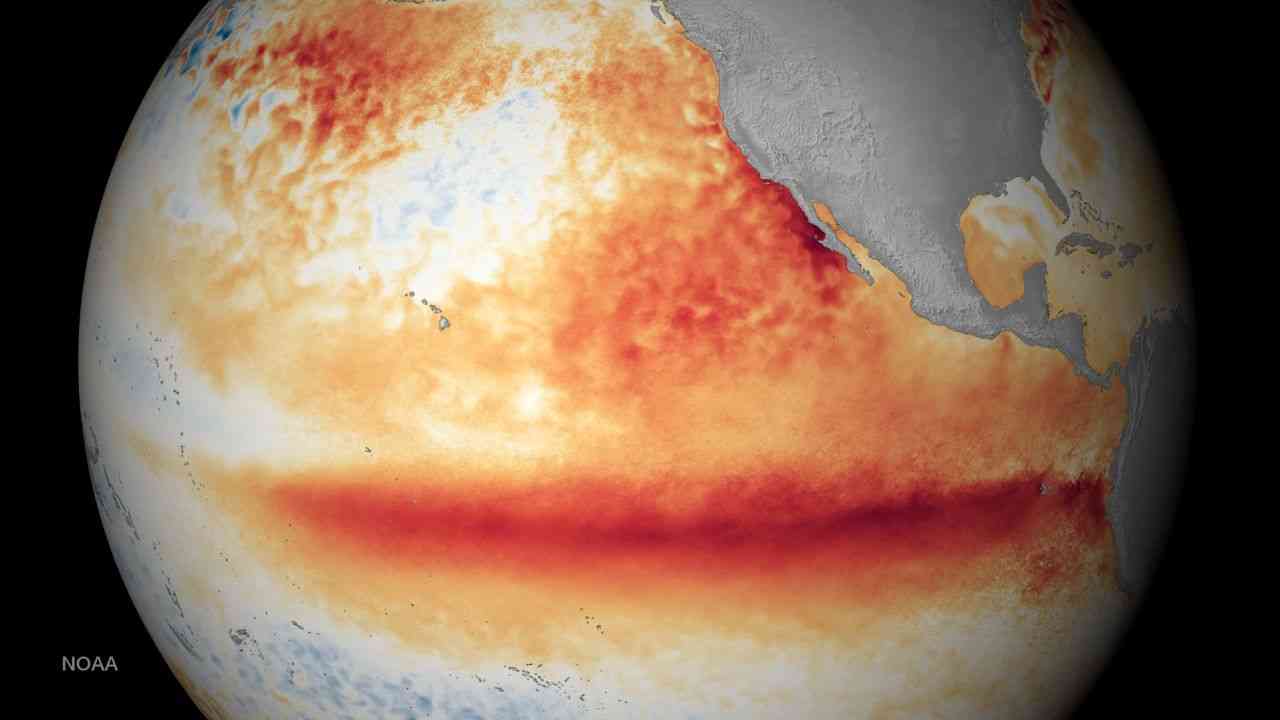
ZIMBABWEAN rural households are starting to feel the brunt of El Niño's consequences with the future already bleak.
El Niño is a naturally occurring climate pattern typically associated with increased heat worldwide as well as drought in some parts of the world and heavy rains in others.
The phenomenon occurs on average every two to seven years and episodes typically last nine to 12 months.
It seems the heavens have been blind to the plight of rural people, making their lives extremely difficult.
Rudo Mtetwa (32) from Chipanga area, Chipinge, said it was now a challenge to get something out of their farms due to climate change effects.
“We are stranded and left with no option but to work in the nearby irrigation farms for survival. We are given US$2 per day and that is it," she said.
Many communal farmers depend on the October rains to plant early crops, but the current state of affairs is so dire that not even those who make a living labouring in fields are encouraged.
The phenomenon, which is not new to Zimbabwe and the region, usually causes delayed and erratic rains, thus, adversely affecting crops and livestock.
- Where does agriculture begin and end?
- El Niño: Zim communities sink deep in poverty
- El Niño challenges demand decisive action
- Lack of storage facilities costs farmers
Keep Reading
“I am no longer able to send my children to school due to lack of funds and I feel that if I get a piece of land in the irrigation scheme, I will be able to take care of my family’s needs. I want to plant tomatoes and other crops but I can't do that in my own field as a result of El Niño,” added Mtetwa.
Talent Mutamakira who hails from the same area called on government to support women in remote areas to alleviate the impact of El Niño.
“As women we are asking for those who can help us with funds to start income-generating projects such as poultry. We plead with the government to allocate pieces of land to women under irrigation schemes so that we produce horticultural products and eke out a living," she said.
According to the 2023 Zimbabwe Vulnerability Assessment Committee’s Urban and Rural Livelihood Assessments, it is estimated that 29% of the urban population in 2023 (1,5 million people) are food insecure, with a further 19% of people in rural areas (estimated at 1,9 million) projected to be food insecure from October to December 2023, before peaking at 26% (2,7 million people) in the first quarter of 2024.
Zimbabwe has over the years grappled with the repercussions of the climate change crisis, which have led to erratic rainfall patterns characterised by either floods or prolonged drought periods.
The upcoming El Niño event forecast for 2023-24, which is associated with drier-than-average conditions, is poised to exacerbate this predicament.
It is expected to intensify aridity, significantly impacting food and animal production across many areas, including those typically classified as “dry regions”.
The National Oceanic and Atmospheric Administration confirmed a strong El Niño event occurring between October 2023 and March 2024. Anticipated outcomes include a delayed onset of rainfall and prolonged dry spells, which could significantly impact food production and disrupt the food supply chain. Regions with typically lower precipitation levels are particularly susceptible to drought, which may result in widespread crop loss, livestock fatalities, increased disease outbreaks, crop pests and challenges related to water, sanitation and hygiene. These challenges, in turn, can have cascading negative effects on nutrition.
According to forecasts from the Meteorological Services Department (MSD), the confirmed El Niño episode is expected to be felt most strongly in the southern parts of the country, spanning from west to east. These areas, which also experienced high levels of food insecurity during the 2015/16 El Niño episode, include Matabeleland North, South, Midlands, Masvingo and Manicaland.
The report also noted that these impending events pose a significant risk to Zimbabwe, potentially undoing the progress made in preventing, reducing and managing malnutrition over the past decade. Under-nutrition is a major contributor to nearly half of all deaths in children under 5 years of age, leaving children more vulnerable to common infections and diarrhoeal diseases while increasing the frequency and severity of illnesses such as measles, malaria and pneumonia.
Zimbabwe has experienced droughts in various years, including 1991 to 1994, 2002, 2004, 2012, 2016 and 2017. The 2012 drought, for instance, resulted in a staggering 45% deficit in the country's main food source, maize, as reported by the FDI Global Food and Water Security Research Programme. During that year, approximately 1,4 million Zimbabweans were on the brink of famine.
The cumulative occurrence of droughts in rural Zimbabwe since 2002 has led to a stagnation of rural livelihoods, which heavily rely on agriculture, as noted by the MSD.
With Zimbabwe, still recovering from the negative impact of the COVID-19 pandemic, an El Niño situation heightens the risk of negative coping mechanisms that can affect access to health and nutrition, education, WASH and child protection services.
Lands and Agriculture minister Anxious Masuka recently told journalists during the World Food Day commemorations held at Bwerudza Irrigation Scheme in Chipinge, Manicaland province, that government was targeting to accelerate irrigation development and dam construction to save the country from the El Niño impact.
“We climate-proof agriculture at two levels, at household level, we use the sustainable intensive conservation model dubbed Pfumvudza/Intwasa and we want all the Pfumvudza tenets to be followed religiously,” Masuka said.
“That is, rolling out mulching and organic lime placement, but most importantly, we want the agro-ecological matching to be done that is the right crop for the right region and desisting from putting maize in regions 4 and 5.
“But putting more of our traditional grains and at national level, we must accelerate irrigation development, dam construction and rehabilitation of these irrigation schemes so that we can climate proof agriculture.”
The commemorations were organised by the World Food Programme (WFP) in conjunction with government.
WFP country director Francesca Erdelman said Zimbabwe was not immune to the looming threat of climate change, adding that the impending El Niño season was a reminder of the challenges the country faced which go far beyond poor crop production and food insecurity.
“Through our El Niño impact mitigation and anticipatory action approach, we will support communities to safeguard and strengthen access to water, enhance climate-smart agricultural practices and strengthen delivery and use of climate services.”
The UN’s meteorological department said El Niño was already underway, adding that there was a 90% chance that it would start in the current half of the year.
An agricultural expert Charles Dhewa said the weather phenomenon would cause the fiscus to misdirect resources from supporting local production to importing food.
“The El Niño will have both positive and negative effects. On the positive side, it will compel policymakers to think outside the box and support the production of diverse commodities beyond the usual crops like maize. By nature, human beings only take action when survival is threatened by a crisis like El Niño or a pandemic. If we embrace food diversity, El Niño may not cause huge negative impacts.
“On the negative side, El Niño will cause the fiscus to misdirect resources from supporting local production to importing food. Tender-preneurs who have always thrived on government tenders to import food will milk the fiscus through corrupt means. Another negative is that food scarcity may increase the politicisation of food with some people being denied food on the basis of political affiliation,” he said.










